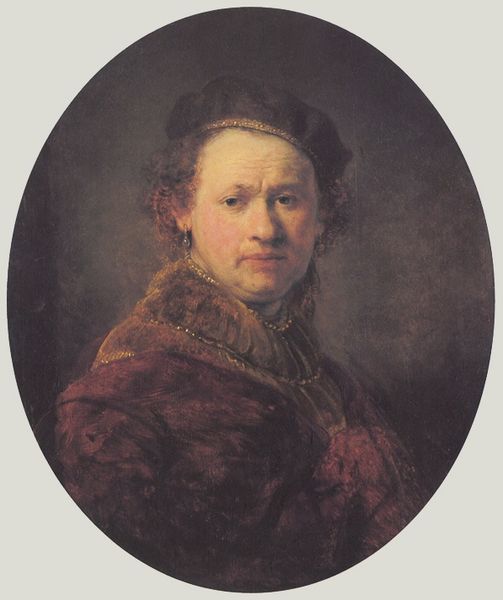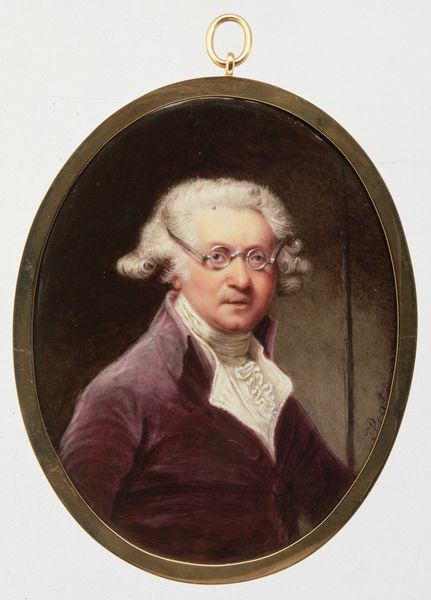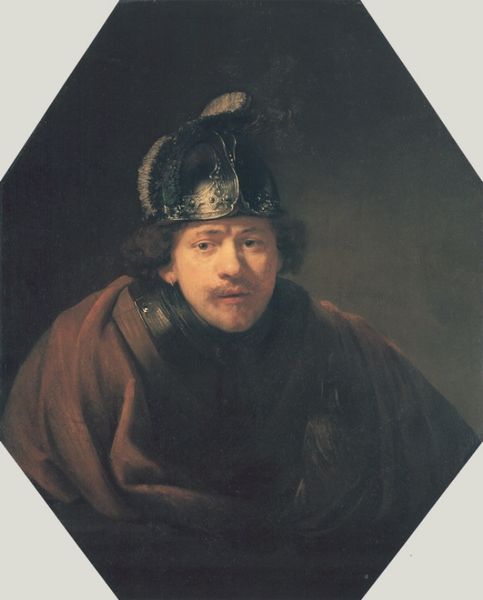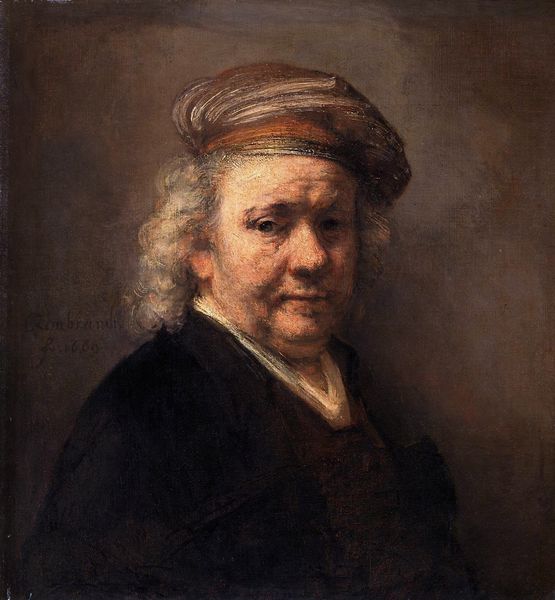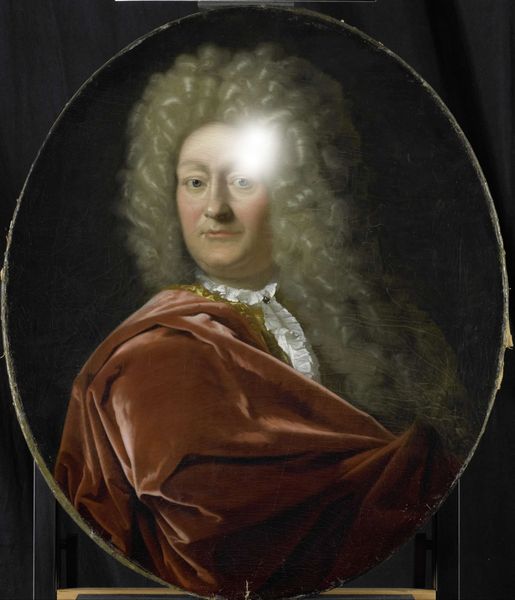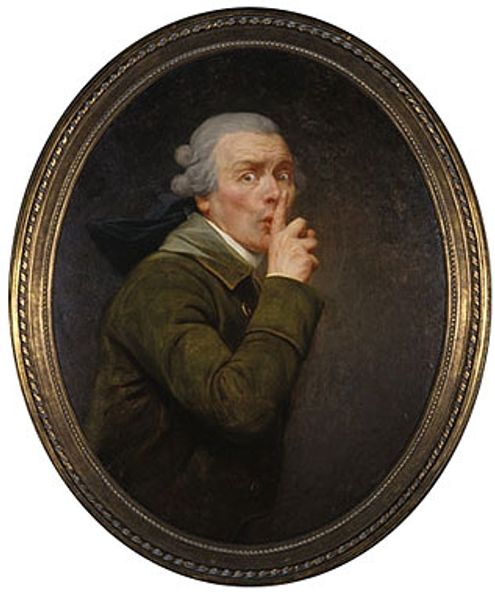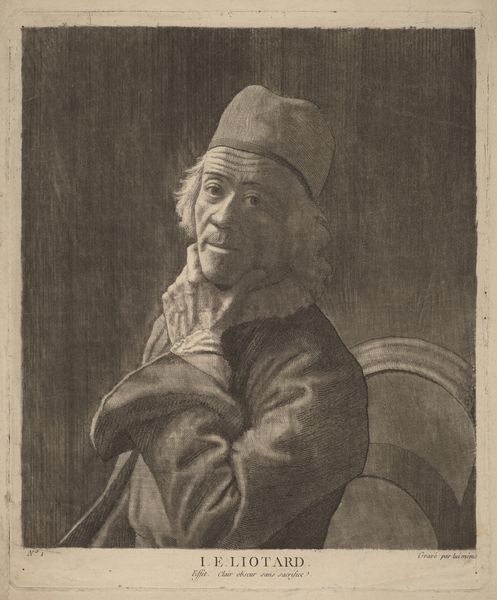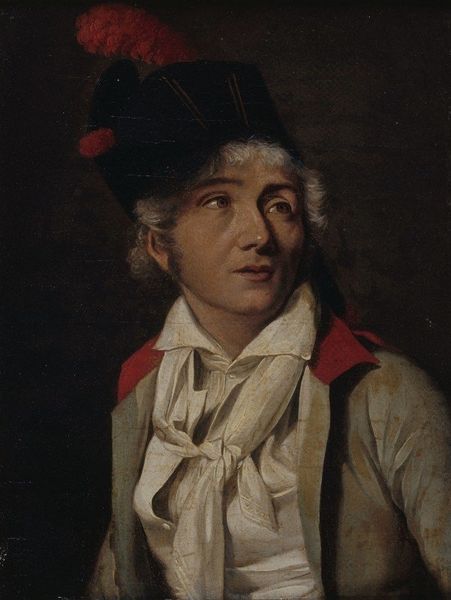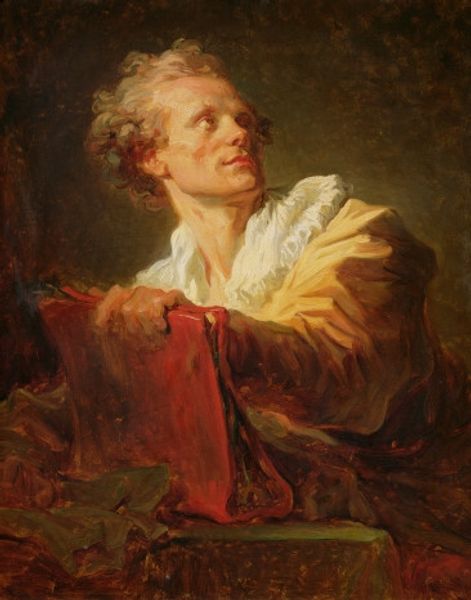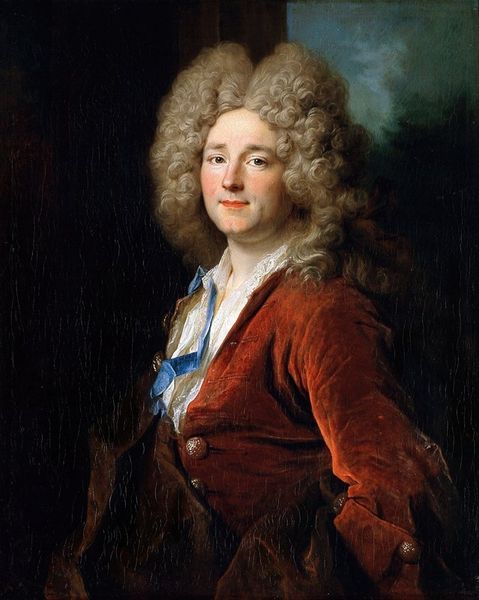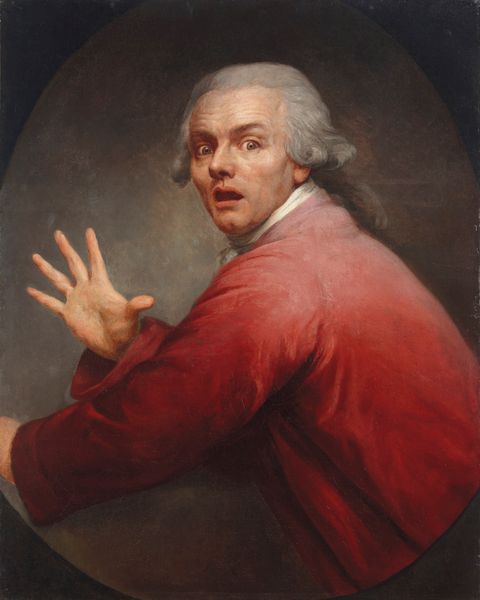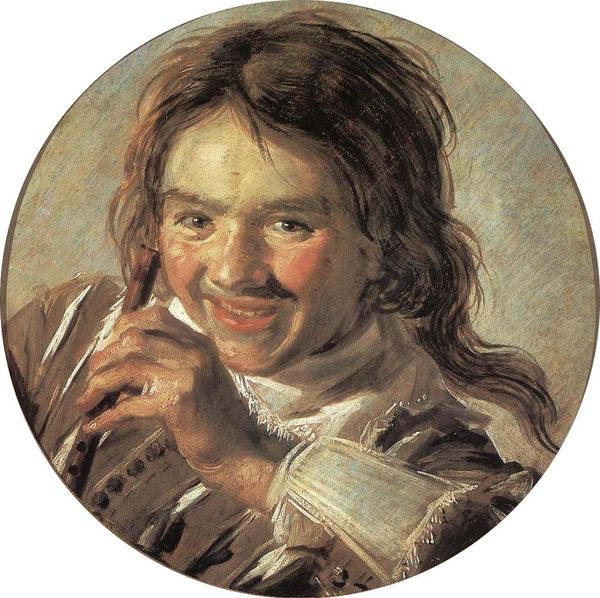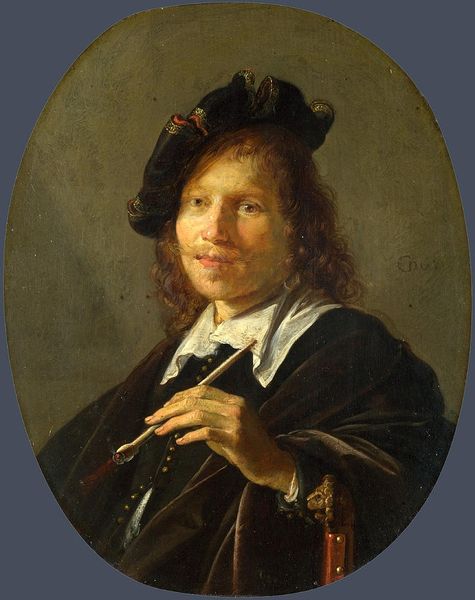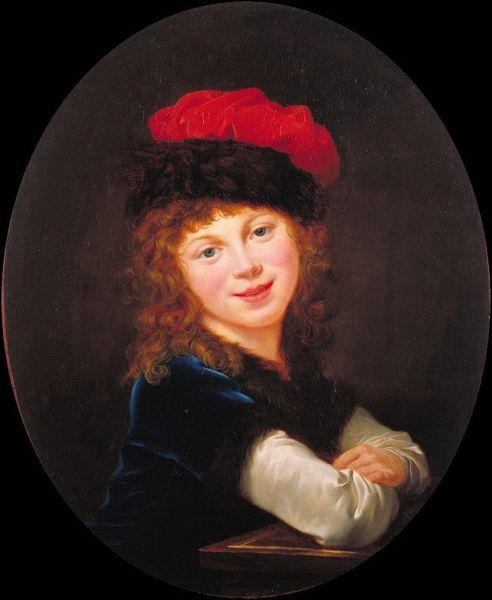
painting, impasto
#
portrait
#
self-portrait
#
painting
#
impasto
#
self portrait
#
rococo
Copyright: Public domain
Editor: Here we have Joseph Ducreux's "Self-portrait with a fur hat," a painting created using impasto. It strikes me as very unusual for a self-portrait – quite informal and even a bit humorous. What stylistic choices jump out at you? Curator: It is through the lens of formal analysis that one might interpret the artistic intent, looking past anecdotal narratives. Consider the composition: the oval frame constrains the subject, creating an intimate space. The impasto technique, evident in the fur hat, generates a tactile quality, doesn't it? How does the texture affect your perception? Editor: It makes it more alive somehow, more real. But isn't the unusual expression important too? Curator: Undeniably, though to emphasize such expressive details veers toward anecdotalism. I would point out that his expression enhances the asymmetrical nature of the portrait. Note how his gaze, directed slightly off-center, defies a conventional, balanced composition. What purpose could this structural tension serve? Editor: Perhaps to make it less static, more engaging? Like a fleeting moment captured? Curator: Precisely. The tension introduced by this dynamic asymmetry suggests a deliberate breaking of formal constraints. The muted tones of the clothing also emphasize the bright color and dynamic texture of the hat. A curious juxtaposition! Editor: So, while seemingly informal, every element is carefully considered? Curator: Indeed. By meticulously deconstructing the painting's formal elements—color, texture, composition—one can see the underlying structure. Through analyzing the intrinsic qualities, one begins to decode an artistic idea, in the purest sense. Editor: I see it now. Looking beyond the face and focusing on how everything is arranged, gives it much more meaning!
Comments
No comments
Be the first to comment and join the conversation on the ultimate creative platform.
